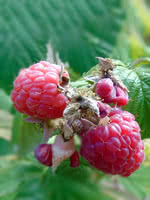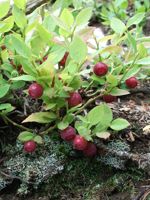Mon-Fri 9am - 5pm Mountain time
Wild Red Raspberry vs Grouseberry
Rubus idaeus
Vaccinium scoparium
CUSTOM GROW
The Wild Red Raspberry produces small, tart, red berries. They are delicious when eaten fresh, but also add flavor to preserves or desserts. They are highly suckering and can be high yielding.
The Wild Red Raspberry is also otherwise known as the American Red Raspberry, European Red Raspberry, Grayleaf Raspberry, or the Common Red Raspberry.
The Wild Red Raspberry are floricanes, primarily fruiting on second year canes. Each spring cut back all two-year old canes, leaving only the last year’s growth. This is a self-pollinating variety, so it doesn’t require a second plant nearby to set fruit.
Grouseberry is a native, low-growing deciduous shrub known for its edible red berries. In early summer, it produces small, urn-shaped flowers ranging from white to pink that attract bees and other pollinators. The berries provide an important food source for many types of wildlife, including game birds such as grouse, which gives the plant its common name. People can also enjoy the berries fresh or in baked goods, though they can be difficult to harvest in large quantities.
Spreading by rhizomes, Grouseberry forms dense, broom-like mats that help stabilize soil and prevent erosion, while also providing cover for ground-nesting wildlife. It is commonly found beneath conifers in open forests, subalpine meadows, and occasionally on rocky slopes in mountainous regions. It is well-suited for naturalization, ecological restoration, and soil stabilization projects.

